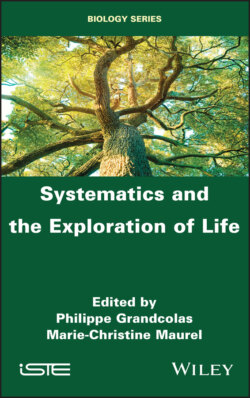Читать книгу Systematics and the Exploration of Life - Группа авторов - Страница 14
1.2. D’Arcy Thompson, symmetry and morphometrics
ОглавлениеA century has passed since the original publication of D’Arcy Thompson’s major work, On Growth and Form (1917). On the occasion of this centenary, several articles have celebrated his magnum opus, highlighting the originality and enduring influence of some of Thompson’s ideas in disciplines such as mathematical biology, physical biology, developmental biology and morphometrics (see Briscoe and Kicheva (2017), Keller (2018) and Mardia et al. (2018) for specific reviews of these various contributions).
Thompson’s main thesis is that “physical forces”, such as gravity or surface tension phenomena, play a preponderant role in the determinism of organic forms and their diversity within the living world. His structuralist conception of the diversity of forms is accompanied by a critique of the Darwinian theory of evolution, but this critique is in fact based on an erroneous interpretation of the causal context (efficient cause vs. formal cause) presiding over the emergence of forms (Medawar 1962; Gould 1971, 2002, p. 1207).
The notion of symmetry is present in the backdrop throughout the book. The successive chapters go through the different orders of magnitude of the organization of life and the physical forces that prevail at each of these scales. The skeletons of radiolarians, the spiral growth of mollusk shells and the diversity of phyllotactic modes are some of the examples illustrating the pivotal role of symmetry in the architecture of biological forms. This interest in symmetry is in line with the work of Ernst Haeckel, whose book Kunstformen der Natur (Haeckel 1899) offers bold anatomical representations emphasizing (and sometimes idealizing) the exuberance and sophistication of symmetry patterns found in nature. Thompson sees the harmony and regularity of symmetric forms as the geometric manifestation of the mathematical principles that establish a fundamental basis for his theory of forms.
This emphasis on geometry finds its clearest expression in the last and most famous chapter of the book, “On the theory of transformation, or the comparison of related forms” (Arthur 2006). Thompson proposes a method for comparing the forms between related taxa, based on the idea of (geometric) transformation from one form to another, by means of continuous deformations of varying degrees of complexity. The morphological differences (location and magnitude) are then graphically expressed by applying the same transformation to a Cartesian grid placed on the original form. In spite of his admiration for mathematics, Thompson’s approach nevertheless remains qualitative and without a formal mathematical framework for its empirical implementation. These graphical representations will, however, have a considerable conceptual impact on biologists working on the issues of shape and shape change. Several more or less elegant and operational attempts at quantitative implementation were made during the 20th century (see Medawar (1944), Sneath (1967) and Bookstein (1978), for example), up until the formulation of deformation grids using the thin-plate splines technique proposed by Bookstein (1989), which is still in use today.
Beyond the questions of symmetry, Thompson’s idea of combining geometry and biology to study shapes remains at the heart of the principles and methods of modern morphometrics (Bookstein 1991, 1996).
